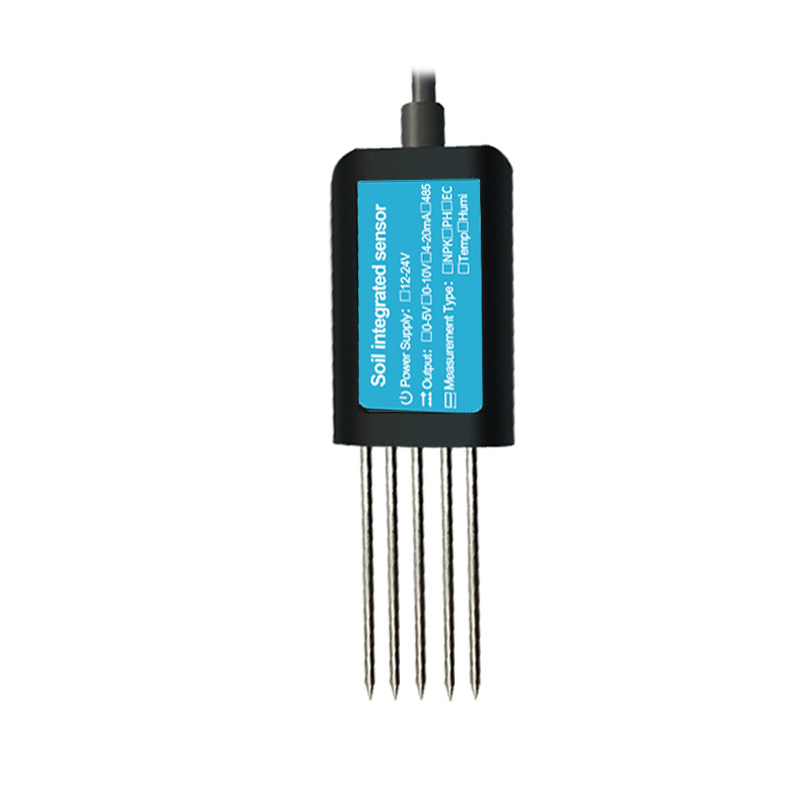Soil is a complex and dynamic system that plays a crucial role in the health of our planet. It is the foundation for agriculture, providing essential nutrients and support for plant growth. Understanding the intricacies of soil composition, moisture levels, and other factors is essential for sustainable land use and food production. In recent years, technological advancements have revolutionized our ability to monitor and analyze soil conditions, thanks in large part to the development of soil sensors.

Soil sensors are powerful tools that enable us to unlock the secrets of soil
providing real-time data on key parameters such as moisture content, temperature, and nutrient levels. These sensors can be deployed in fields, vineyards, and other agricultural settings, allowing farmers and land managers to make informed decisions about irrigation, fertilization, and other critical practices. By harnessing the power of soil sensors, we can optimize resource use, minimize environmental impact, and maximize crop yields.
One of the most significant advantages of soil sensors is their ability to provide precise
localized data. Traditional methods of soil analysis often involve time-consuming and labor-intensive processes, such as collecting samples for laboratory testing. Soil sensors, on the other hand, can continuously monitor conditions at specific locations, offering a more comprehensive and detailed understanding of soil dynamics. This granular level of insight enables farmers to tailor their management strategies to the unique needs of different areas within a field, leading to more efficient and sustainable farming practices.
In addition to improving agricultural productivity
soil sensors also play a crucial role in environmental conservation. By monitoring soil moisture levels, for example, these sensors can help prevent over-irrigation, which not only wastes water but can also lead to leaching of nutrients and agrochemicals into groundwater. With real-time data on soil moisture, farmers can implement precision irrigation techniques, delivering water directly to where it is needed most. This not only conserves water but also reduces the risk of soil erosion and nutrient runoff, promoting the long-term health of the land.
Furthermore
soil sensors contribute to the advancement of precision agriculture, a holistic approach that leverages technology to optimize farming practices. By integrating data from soil sensors with other sources, such as satellite imagery and weather forecasts, farmers can gain a comprehensive understanding of their fields and make data-driven decisions. For example, by analyzing soil moisture levels alongside weather patterns, farmers can anticipate drought conditions and adjust their irrigation schedules accordingly, mitigating potential crop losses.
The power of soil sensors extends beyond traditional agriculture
encompassing a wide range of applications in environmental science and land management. For instance, soil sensors are invaluable tools for monitoring and restoring ecosystems, providing critical data for reforestation efforts, wetland conservation, and habitat restoration projects. By understanding the unique soil characteristics of different environments, conservationists and land managers can make informed decisions about land use and restoration strategies, fostering biodiversity and ecological resilience.
As technology continues to advance
the capabilities of soil sensors are evolving as well. Modern soil sensor systems are increasingly equipped with wireless connectivity and data transmission capabilities, enabling remote monitoring and real-time alerts. This connectivity allows farmers and land managers to access soil data from anywhere, using smartphones or computers to make timely and informed decisions. Moreover, the integration of soil sensor data with cloud-based platforms and analytics tools opens up new possibilities for data analysis and predictive modeling, further enhancing our ability to understand and manage soil systems.
Despite their numerous benefits
the widespread adoption of soil sensors still faces challenges. Cost can be a significant barrier for small-scale farmers and land managers, particularly in developing regions. Additionally, ensuring the accuracy and reliability of soil sensor data is essential, as decisions based on faulty information can have detrimental consequences. As such, ongoing research and development efforts are focused on improving sensor technologies, reducing costs, and enhancing data quality, with the aim of making soil sensors more accessible and effective for a broader range of users.
In conclusion
soil sensors represent a powerful and transformative technology with the potential to revolutionize the way we understand and manage soil systems. By providing real-time, localized data on key soil parameters, these sensors empower farmers, land managers, and environmental scientists to make informed decisions that promote sustainable land use, enhance agricultural productivity, and conserve natural resources. As we continue to unlock the secrets of soil through the power of soil sensors, we move closer to a future where our interactions with the land are guided by knowledge, precision, and environmental stewardship.

In summary, soil sensors are a crucial tool for unlocking the secrets of soil, providing real-time data on key parameters such as moisture content, temperature, and nutrient levels. These sensors offer precise, localized information that can be used to optimize agricultural practices, conserve natural resources, and promote environmental sustainability. As technology continues to advance, the capabilities of soil sensors are evolving, offering new possibilities for data analysis and predictive modeling. While challenges such as cost and data accuracy remain, ongoing research and development efforts are focused on improving sensor technologies and making them more accessible to a broader range of users. Ultimately, soil sensors represent a powerful and transformative technology with the potential to revolutionize the way we understand and manage soil systems, paving the way for a more sustainable and productive future.
